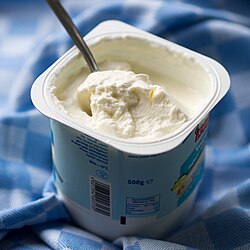
[Informative Article on Ants as Milk Fermenters]
In a captivating study of historic food techniques, an interdisciplinary team of researchers has revealed the distinct function that ants play in the fermentation of traditional yoghurt. Merging insights from microbiology, ecology, anthropology, food science, and culinary arts, this initiative has recreated a traditional yoghurt recipe from the Balkans and Türkiye, uncovering the biological processes that enable ants to serve as effective agents in milk fermentation.
The Key Role of Ants
It turns out that ants generate formic acid, which initiates the milk coagulation process. Their mouths contain bacteria that produce lactic and acetic acids, contributing to the souring of yoghurt. Additionally, ants deliver proteases—enzymes that improve the texture of yoghurt, offering what researchers call ‘a delightful mouthfeel.’
Project Genesis and Collaboration
This extensive study commenced approximately four years ago when biologist and ecologist Robert Dunn brought together various independent research initiatives. A year later, microbiologist Leonie Johanna Jahn joined the effort, adding her knowledge of eco-friendly fermentation methods after being intrigued by the fermentation potential of ants highlighted in Sandor Katz’s book “The Art of Fermentation.”
Further Interdisciplinary Involvement
The project grew with the involvement of anthropologist Sevgi Mutlu Sirakova and chef-researcher Diego Prado Vásquez. Utilizing their varied expertise, they examined the culinary and biological repercussions of employing ants in yoghurt fermentation. This cooperative effort was further enhanced by input from additional experts and institutions, including the University of Copenhagen, the Technical University of Denmark, and industry partners like Novonesis and Summ Ingredients.
Traditional Practices and Modern Adaptations
Field research in Bulgaria, led by Sirakova, validated the historical use of ants in yoghurt fermentation. Researchers replicated the method successfully in a laboratory in Copenhagen, leading to innovative culinary experiments at Alchemist, a two-Michelin-star eatery. Their modern interpretations of ant-fermented yoghurt featured yoghurt ice-cream sandwiches and mascarpone-like cheeses with bold flavors.
Implications and Future Prospects
The research emphasizes the rich microbial diversity found in traditional fermentation practices, contrasting with the limited profiles of industrial yoghurt. This diversity increases resilience against phage infections, enhances flavors, and may provide health benefits. As the project progresses, Dunn and his team are eager to investigate how the lactic acid bacteria from various ant species can be utilized in culinary settings.
By promoting collaboration across disciplines and cultural boundaries, this project illustrates how traditional practices can influence contemporary gastronomy and scientific inquiry. The continuous discourse among the team promises to spark further advancements in food fermentation, grounded in trust and shared human experiences.